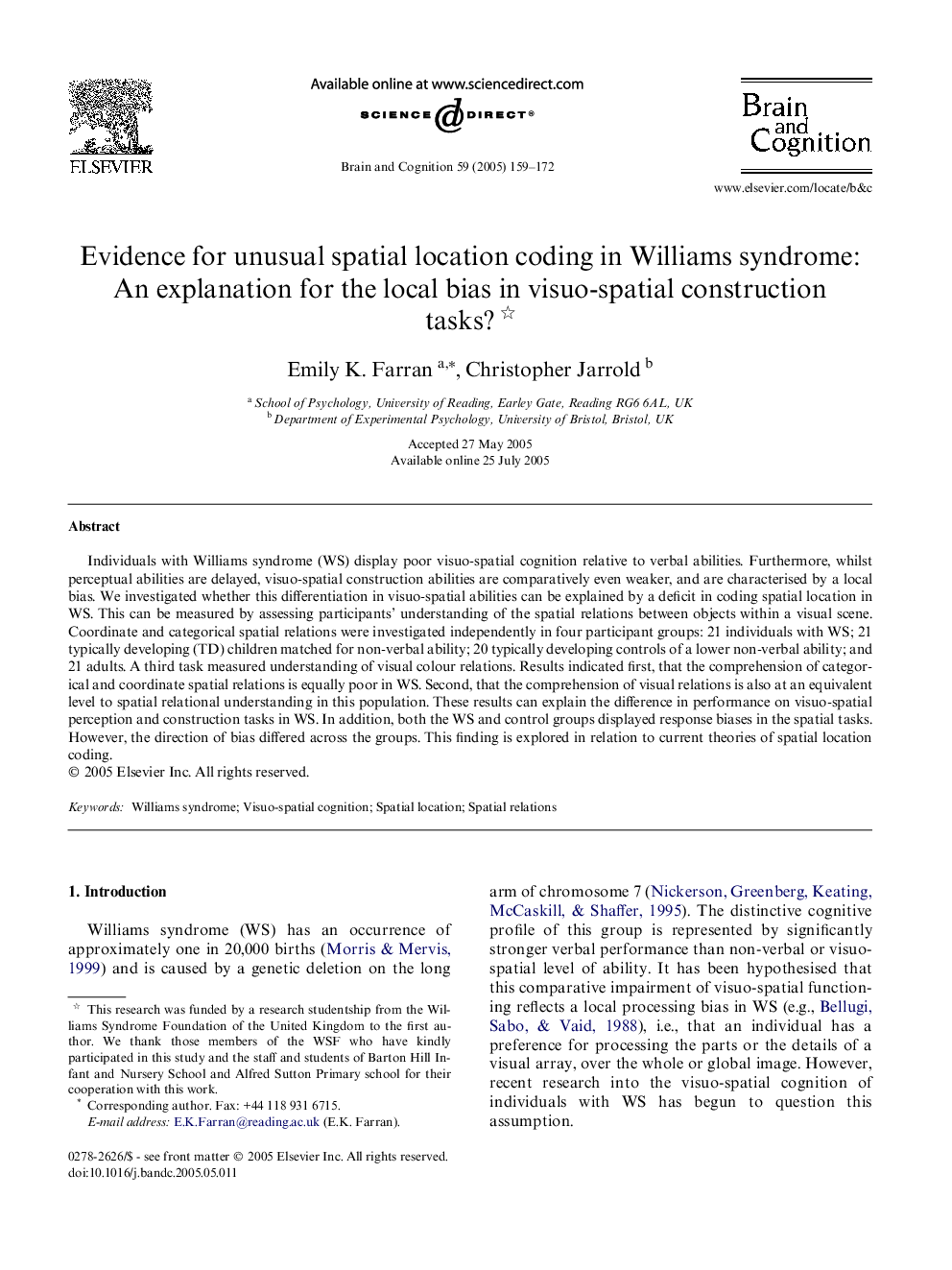| کد مقاله | کد نشریه | سال انتشار | مقاله انگلیسی | نسخه تمام متن |
|---|---|---|---|---|
| 10455630 | 921239 | 2005 | 14 صفحه PDF | دانلود رایگان |
عنوان انگلیسی مقاله ISI
Evidence for unusual spatial location coding in Williams syndrome: An explanation for the local bias in visuo-spatial construction tasks?
دانلود مقاله + سفارش ترجمه
دانلود مقاله ISI انگلیسی
رایگان برای ایرانیان
کلمات کلیدی
موضوعات مرتبط
علوم زیستی و بیوفناوری
علم عصب شناسی
علوم اعصاب شناختی
پیش نمایش صفحه اول مقاله

چکیده انگلیسی
Individuals with Williams syndrome (WS) display poor visuo-spatial cognition relative to verbal abilities. Furthermore, whilst perceptual abilities are delayed, visuo-spatial construction abilities are comparatively even weaker, and are characterised by a local bias. We investigated whether this differentiation in visuo-spatial abilities can be explained by a deficit in coding spatial location in WS. This can be measured by assessing participants' understanding of the spatial relations between objects within a visual scene. Coordinate and categorical spatial relations were investigated independently in four participant groups: 21 individuals with WS; 21 typically developing (TD) children matched for non-verbal ability; 20 typically developing controls of a lower non-verbal ability; and 21 adults. A third task measured understanding of visual colour relations. Results indicated first, that the comprehension of categorical and coordinate spatial relations is equally poor in WS. Second, that the comprehension of visual relations is also at an equivalent level to spatial relational understanding in this population. These results can explain the difference in performance on visuo-spatial perception and construction tasks in WS. In addition, both the WS and control groups displayed response biases in the spatial tasks. However, the direction of bias differed across the groups. This finding is explored in relation to current theories of spatial location coding.
ناشر
Database: Elsevier - ScienceDirect (ساینس دایرکت)
Journal: Brain and Cognition - Volume 59, Issue 2, November 2005, Pages 159-172
Journal: Brain and Cognition - Volume 59, Issue 2, November 2005, Pages 159-172
نویسندگان
Emily K. Farran, Christopher Jarrold,